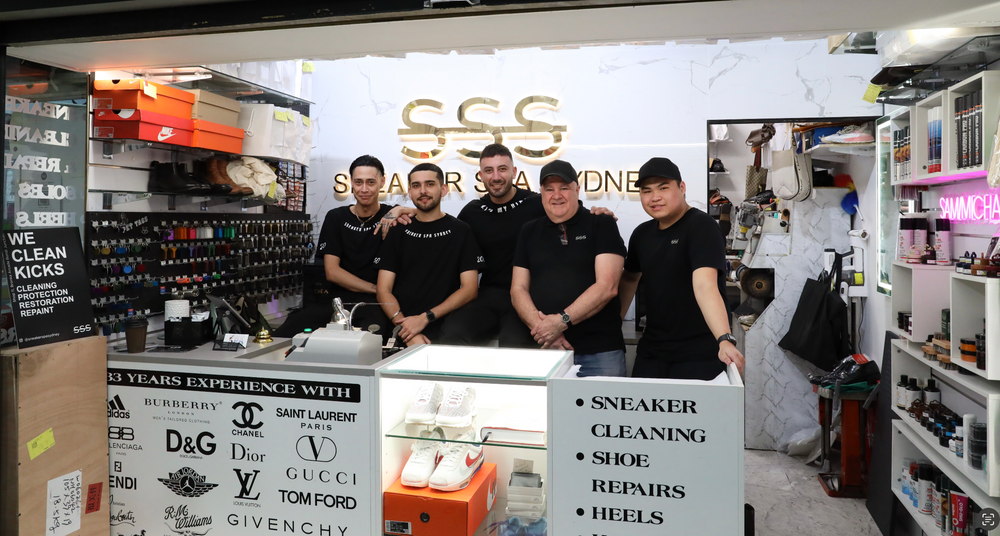Sneaker History
HISTORY OF THE AIR MAX
Nike introduced its Air Cushioning Technology in 1979. By embedding Air Cushioning in the midsoles of its running shoes, it changed the way athletes approached and reacted to athletic performance forever. Eight years later, as Nike continued to bring the latest scientific discoveries to footwear design, the Nike Air component became larger – meaning greater cushioning and comfort – and was made visible for the first time in the Air Max shoe: now athletes could see as well as feel the benefits of Nike Air. Many Nike Air products were developed since then and many of them grew to become icons on and off the track.
Nike’s Air technology wasn’t new; it was developed by former NASA engineer Frank Rudy and introduced in the Air Tailwind in 1978. Air replaced traditional molded EVA soles with gas filled urethane pouches. However, it was the consensus that as performance technology the pouches ought to be felt and not seen. That was until Hatfield came along.
It wasn’t another sneaker or even a fashion concept that planted the idea to expose the Air-cushioned sole in Hatfield’s mind, it was a controversial building in Paris that many considered an eyesore. “I don’t know if I was thinking, well now I’m going to design a shoe based off of this,” Hatfield said in the documentary series Respect the Architects. “I just remember being super influenced by it and having my architectural senses turned upside down.” He’s referring to the Centre Georges Pompidou, a building design that took all its functional and structural elements and placed them on the outside for all to see. Even today, its irregularity remains impossible to miss amongst Paris’ traditional architecture. Hatfield believes that had he not seen the building he may never have suggested revealing the air pouch: “I thought let’s make the bag a little bit wider, make sure it’s stable, but then let’s go ahead and remove part of the midsole so we can actually see it.”
Nike’s first sneaker to reveal the Air-cushioned sole, the Air Max 1, finally released March 26, 1987 and featured in Nike’s first television ad the same year. It was part of the Air Pack which also featured the Air Trainer 1, Air Sock, Air Revolution and Air Safari. “I was at an airport right around the time the first Air Max sneaker launched,” explains Forland. “I was calling a tech in the lab when someone walked by wearing a pair. I stared at him from the phone booth and said, ‘Somebody bought them. I see the Air-Sole going up and down!’ It was a big risk, but bigger reward.”
From then onward, Air Max has been the gift that keeps on giving, the innovation led to a sneaker series that’s still going strong thirty years later. Air Max 90, Air Max 180, Air Max 95, Air Max 97, Air Max Plus, Air Max 360 and Air Max 2015, amongst others, have all notably followed the original. This year, alongside the Air VaporMax, Nike debuts the most innovative Air Max 1 to date, the celebratory anniversary edition Air Max 1 Ultra 2.0.

HISTORY OF THE ADIDAS SUPERSTAR
The Superstar was originally a basketball shoe manufactured by Adidas in 1969. The Superstar shoe was originally released as a low-top version of the Pro Model basketball shoe but has achieved such popularity, it has been re-imagined time and time again and used on further product types. Nicknamed the “shelltoe”, “shell shoes”, and “shell tops” for their rubber shell toe piece, this iconic silhouette is regarded as one of the major influences in the rise of the modern day “sneaker culture”.

At the time of release the leather upper and shell toe were completely unheard of and it soon caught the attention of professional basketball players, notably Kareem Abdul Jabbar. It’s revolutionary technological qualities were soon replicated onto the shoes of the majority of the NBA for their protective qualities and their influence has helped Adidas remain a household name in the States to this day. Even as technology moved on in the footwear industry, the Superstar was held in such high regard that it made the natural transition from court to streets, and it is there that it really left its lasting impression.
HISTORY OF THE REEBOK CLASSIC
The Classics line’s legacy is reflected in recent collaborations. Palace’s Classic and Workout follow a lineage of local pride in Southbank style, with skater Reese Forbes wearing Classics, Stevie Williams’ mid-2000s DGK Workout signature model, and the Club C’s brief moment as the shoe of choice in the scene. West Coast phenomenon Kendrick Lamar continues the hip-hop patronage of white leather Reeboks. Gosha Rubchinskiy’s Ex-O-Fits and reworking of 1984’s Phase 1 tennis shoe take it back to the aspirational time when Reebok hit Russia and made its mark years before Nike arrived.

With snobbery overruled, there has been a realization that the Classics line’s role in underground movements is making significant steps aboveground. Paul Fireman and his team’s early 1980s risk-taking is still paying dividends. Reebok’s organically occurring roles in divergent subcultures happened through accessibility rather than any attempts to crassly force-feed the shoes to an influential audience. Younger brothers and sisters, nephews and nieces, and sons and daughters all witnessed the Classic’s role as a status symbol on older feet, ensuring that the legacy continues. Straightforward looks defy a specific era. This is proven by a shoe like the Workout, Club C, or Classic, which are simple surfaces on which to project the spirit of the times. This is how a shoe attains immortality.
HISTORY OF THE CONVERSE ALL-STAR
Charles H. Taylor was a basketball player for the Akron Firestones. He liked what he saw in the All Star shoe and saw its potential for the sport of basketball As a matter of fact, he believed in the shoe so much that in 1921 he joined the Converse sales force, and later became the player/coach for the Converse All-Stars, the company's industrial league basketball. team. Throughout his career with Converse, Taylor traveled all across the United States hosting basketball clinics and promoting the All Star shoe. His personal salesmanship plus clever marketing devices like the Converse Basketball Yearbooks put his imprint on the sport at all team levels. But the Converse Corporation also bestowed something else on him. Because he was so successful in promoting Converse All Stars, as well as making important changes in the design of the All Star shoe, in 1932, his name “Chuck Taylor” was added to the ankle patch. The “Chuck Taylor” All Star basketball shoe was born!

Despite all of the innovations and changes in the athletic shoe industry, ‘Chuck’ Taylor athletic shoes continue to live on! Thousands of pairs of high top and low cut chucks are still sold each week worldwide. Because they are a unisex design, the same sneakers are worn by both men and women, girls and boys. As of today more than 800,000,000 pairs of chucks have been sold. Unlike other sneakers that lose their popularity, the Converse All Star ‘Chuck’ Taylor still remains fashionable and people who like chucks are fanatical in their devotion to the shoes. As the decades pass, these simple but timeless sneakers are rediscovered and adapted by millions of people in each new generation who like their look and feel on their feet. Converse All Star ‘Chuck’ Taylors are over 80 years old but still going strong! And since 1949, the basic design of the ‘Chuck’ Taylor basketball shoe has not changed. Converse All Star Chuck Taylor basketball shoes in their distinctive high top and low cut oxford models are the classic American sneaker, and a favorite shoe for people of every age all around the world.


